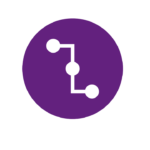Today’s consumers (and customers) live in a cluttered world of information overload. There is more content available than ever before, and there is more competition for the attention of consumers.
Business owners are fighting a war for attention to cut through all the clutter and drive business results. To succeed, Brands must be better at grabbing attention and building strong brand associations than competitors.
The Associative Attention framework helps brand owners achieve this. It is built on the fact that attention itself is not the end goal, but it is an important step towards sales.








